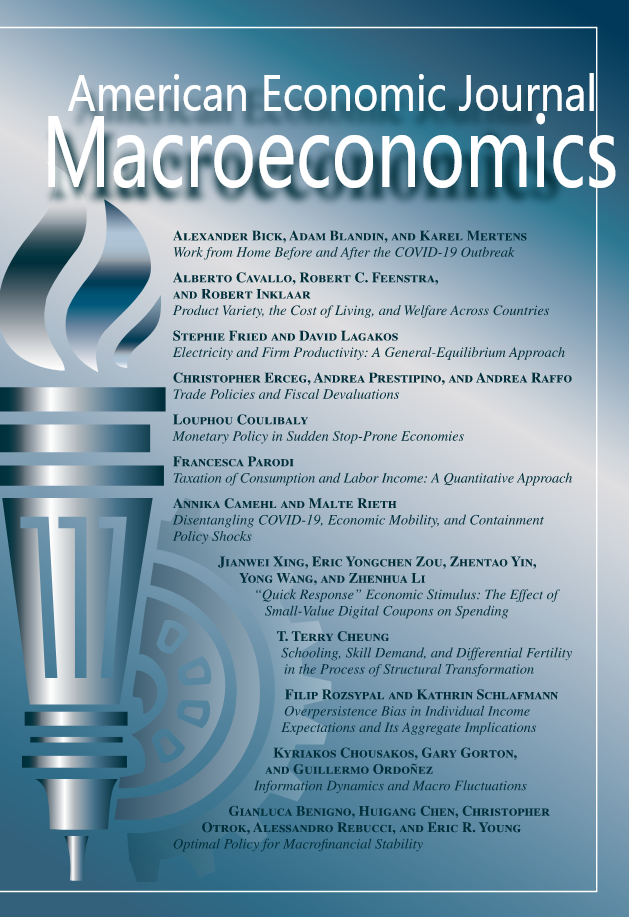MPC Heterogeneity and Household Balance Sheets
IF 5.7
1区 经济学
Q1 ECONOMICS
引用次数: 0
Abstract
We use sizable lottery prizes in Norwegian administrative panel data to explore how transitory income shocks are spent and saved over time and how households’ marginal propensities to consume (MPCs) vary with household characteristics and shock size. We find that spending peaks in the year of winning and gradually reverts to normal within five years. Controlling for all items on households’ balance sheets and characteristics such as education and income, it is the amount won, age, and liquid assets that vary systematically with MPCs. Low-liquidity winners of the smallest prizes (around US$1,500) are estimated to spend all within the year of winning. The corresponding estimate for high-liquidity winners of large prizes (US$8, 300–150,000) is slightly below one-half. While conventional models will struggle to account for such high MPC levels, we show that a two-asset life cycle model with a realistic earnings profile and a luxury bequest motive can account for both the time profile of consumption responses and their systematic covariation with observables. (JEL D12, D15, E21, G51, H24)MPC异质性与家庭资产负债表
我们在挪威行政小组数据中使用了相当大的彩票奖金,以探索短期收入冲击如何随着时间的推移而被花费和储蓄,以及家庭的边际消费倾向(MPCs)如何随家庭特征和冲击规模而变化。我们发现,支出在获胜之年达到峰值,并在五年内逐渐恢复正常。考虑到家庭资产负债表上的所有项目以及教育和收入等特征,随着mpc的变化,韩元的金额、年龄和流动资产会有系统的变化。据估计,流动性较低的最小奖金(约1,500美元)获奖者将在获奖后的一年内花光所有奖金。大额奖金(8300 - 150000美元)的高流动性获奖者的相应估计略低于一半。虽然传统模型将难以解释如此高的MPC水平,但我们表明,具有现实收入概况和奢侈品遗赠动机的双资产生命周期模型可以解释消费反应的时间概况及其与可观测值的系统共变。(凝胶d12, d15, e21, g51, h24)
本文章由计算机程序翻译,如有差异,请以英文原文为准。
求助全文
约1分钟内获得全文
求助全文
来源期刊

American Economic Journal-Macroeconomics
ECONOMICS-
CiteScore
8.20
自引率
1.70%
发文量
58
期刊介绍:
American Economic Journal: Macroeconomics focuses on studies of aggregate fluctuations and growth, and the role of policy in that context. Such studies often borrow from and interact with research in other fields, such as monetary theory, industrial organization, finance, labor economics, political economy, public finance, international economics, and development economics. To the extent that they make a contribution to macroeconomics, papers in these fields are also welcome.
 求助内容:
求助内容: 应助结果提醒方式:
应助结果提醒方式:


